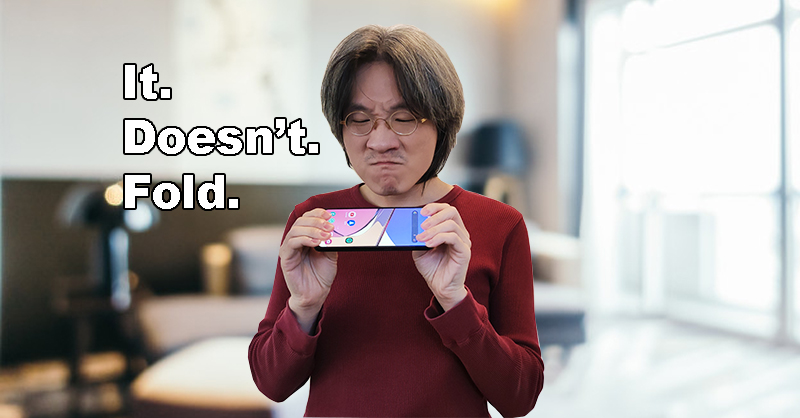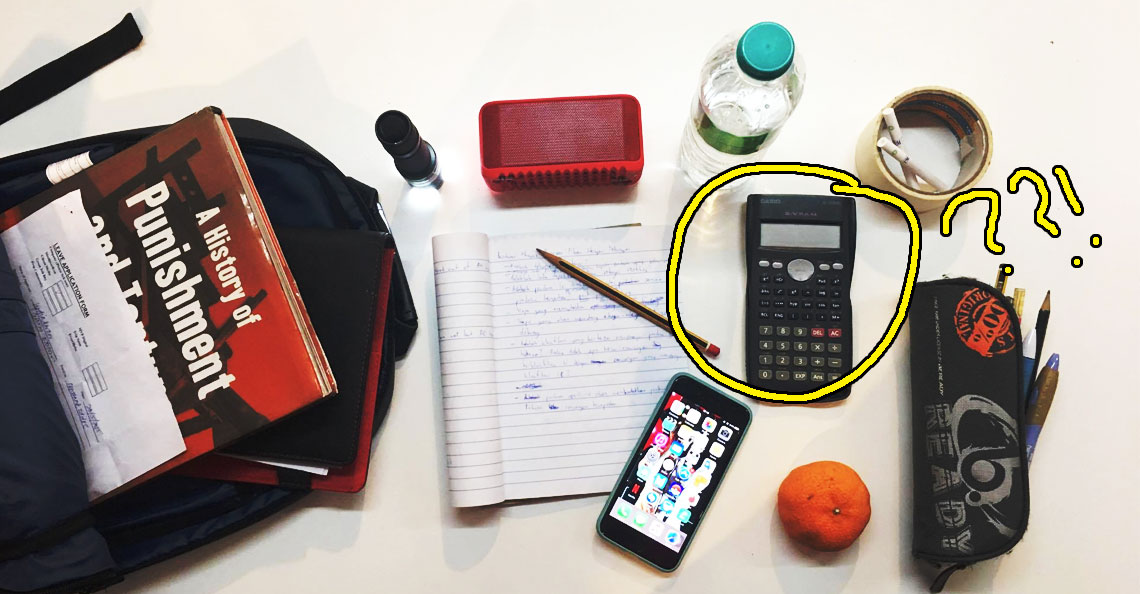ASUS made me replace my MacBook with the Zenbook S16. I have no regrets
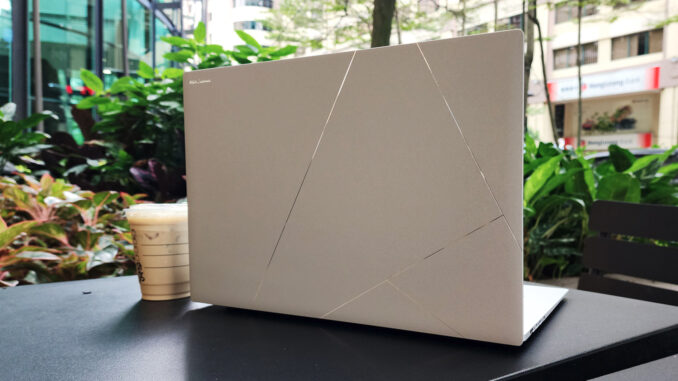
- 36Shares
- Facebook34
- Twitter1
- WhatsApp1
When a friend at ASUS forced asked me to review the RM7,999 ASUS Zenbook S16, I was confused. I’ve known this guy for years, and we’d often banter about me being an Apple simp (I use Android though). So he should know I’m the worst possible candidate to review a Windows laptop.
I reminded him that I’ve been using my personal Macbook at work because I refuse to use our company-supplied Windows laptops.
Eventually he said, “Whatever you like about the Mac, the Zenbook can do better. If you don’t like it, you can trash it in the review and I’ll go back to my previous career of being jobless”. With such confidence, how could I say no? I’ve always wanted a jobless friend.
Fortunately for him, the Zenbook S16 started off with a strong first impression.
I wish Macs are built like the Zenbook S16
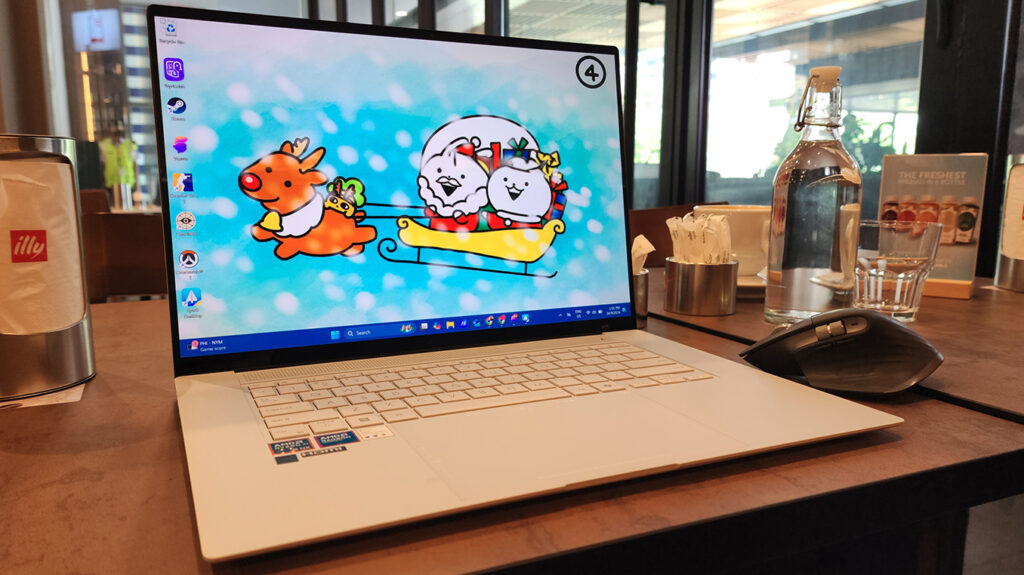
When I took the Zenbook S16 out of the box, my mind was instantly comparing it to my 13-inch M2 Macbook Air. It was slightly thicker, but also slightly heavier. That wasn’t a good start. It wasn’t until I put it next to my Macbook that I realized I was holding a 16-inch laptop.
From a portability standpoint, that’s a compliment every laptop likes to hear – it doesn’t look 16 inches, it doesn’t feel 16 inches. But it is 16 inches.
And then there’s the design. I haven’t worked outside much since the lockdowns, but the Zenbook S16 encourages me to plonk it down in a cafe and show it off.
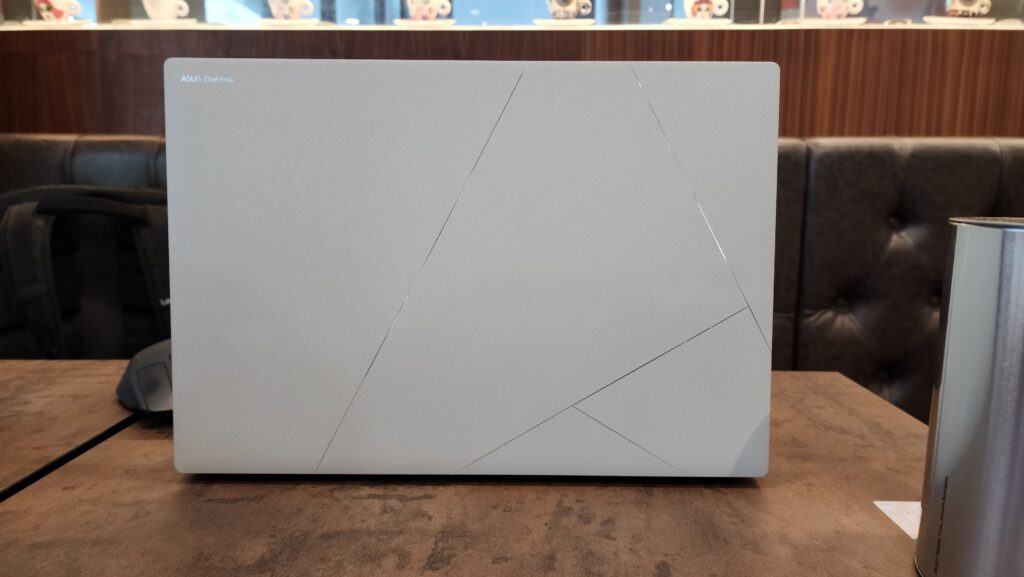
The Scandanavian White model I got wouldn’t look out of place as a wall tile in a 5-star hotel. The top panel is made from Ceramide Ceraphonics Ceraluminium, which is what ASUS names their ceramic-aluminum material. This material apparently lends durability while cutting down on weight and giving it a unique look and feel.
I don’t disagree with it. The top panel is cool but not cold to the touch. It has the porous softness of ceramic while being as rigid as an accountant in a dance competition. Accented with thin strips of silver, this is both the classiest laptop and the classiest wall tile I’ve seen. Next to it, the Macbook is just… boring.
ASUS has sold me enough on Ceraluminium that I only have one knock on the design. I wish the base – particularly the palm rests – are made of the stuff.
The Zenbook S16 keyboard and trackpad is great for work, okay for play
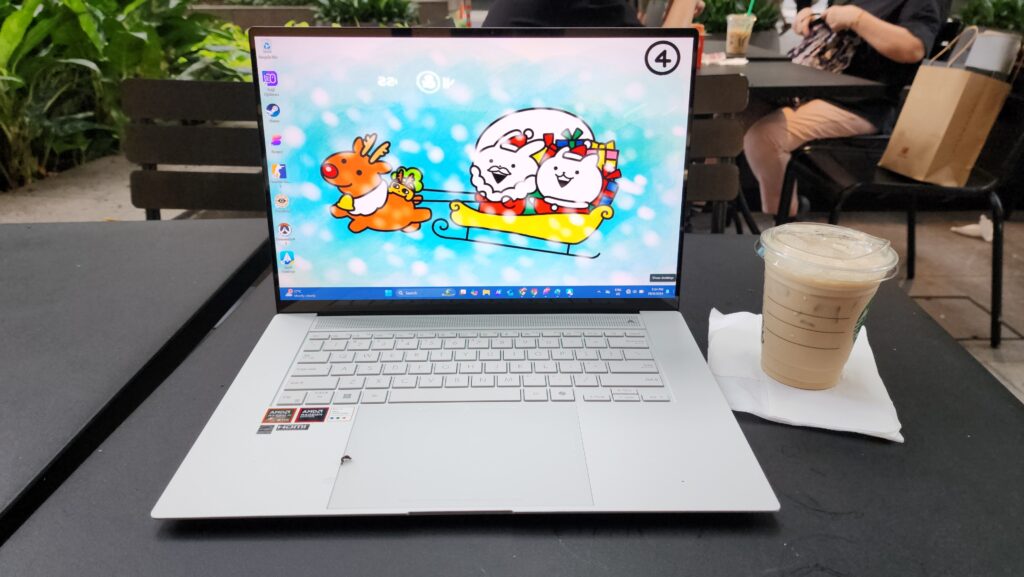
I switched to a Macbook out of frustration with the keyboards and, especially, trackpads on my past laptops. Toshiba, HP, and Lenovo if you’re curious. I have a particular hatred for the “helpful” shortcut and feature zones that get in the way of clicks and swipes.
I was quite surprised at how quickly I adapted to the Zenbook’s keyboard. Barring muscle memory of the CMD and CTRL shortcuts, the chiclet keys provide enough space and tactile clickyness for heavy-duty typing.
While I still prefer the trackpad on the Macbook, the Zenbook S16’s trackpad is no slouch. Tap to click is usually a pain for lesser trackpads, even on the Huawei Matebooks we provide in the office. The Zenbook’s large glass panel has just the right amount of gritty smoothness for accuracy, and the brightness and volume sensors are actually helpful. Do note that the Zenbook’s trackpad uses a physical click instead of haptics, so that may make a difference if you prefer to press down on trackpads.
There are tradeoffs, however.
The Zenbook S16 shares the same reasons why a Mac isn’t ideal for gaming – the luxuries of work impede on the joys of gaming. While the keyboard is a joy to type on, the key travel and placement makes lends to a cramped experience for FPS shooters. Your wrist will also inevitably rest on the large trackpad. To ASUS’s credit, there was no unintended movement or clicks, but the difference in texture can be quite distracting.
This laptop purrs like a cuddling kitty… until it doesn’t
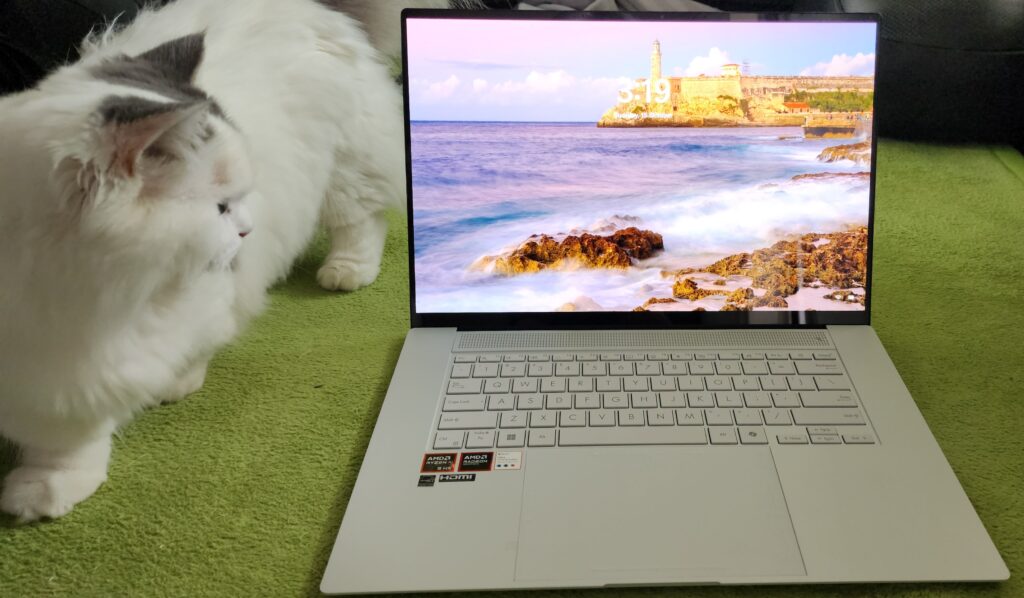
Click here for the full list of specs!
I can only describe the screen as gorgeous. The 16-inches of real estate is great for work and the 3K 120Hz OLED display amazing for videos, games, and Photoshop. However, it’s kryptonite is sunlight. Under sunlight (or a bright spotlight), the screen gets more unnecessary glare than a Chindian eating during Puasa month. This is more of an indoor/dim cafe kinda machine.
On regular work use with Balanced Mode, the Zenbook is either silent or purrs along with the warmth of a cuddling kitty. It’s almost comforting in a cold office. With 15-30 tabs open on Chrome, Spark email, Beeper, and the occasional Photoshop running; the 78 watt-hour battery lasts between 7-9 hours before needing a charge.
However, that all changes when you switch it to Performance or Full Speed Mode. Then, kitty gets the zoomies.
The fans kick in, and the heat can reach a degree where I wouldn’t put the laptop on my lap. Unlike my previous 2019 Macbook Pro though, this feels purposeful. The confident drone of the fans and the rising heat makes me feel like the AMD Ryzen AI 9 HX 370 processor is awake and ready to hunt.
Although the Zenbook S16 isn’t a gaming laptop, it handles Counter-Strike 2, Overwatch 2, and Hitman: World of Assassination on high settings like a champ. I only noticed stutters in Overwatch 2, but those were random and very far in between. Needless to say, you’d want to have this thing plugged in while gaming.
The Zenbook S16 comes with decent ports, stylus pen, and top-notch speakers
Here’s where I make a confession. I spent my first day with the Zenbook thinking the grille above the keyboard were speakers. Nope, that’s the air vent. It’s embarrassing, but not as much as hitting the Star Trek-like logo thinking it was the power button.
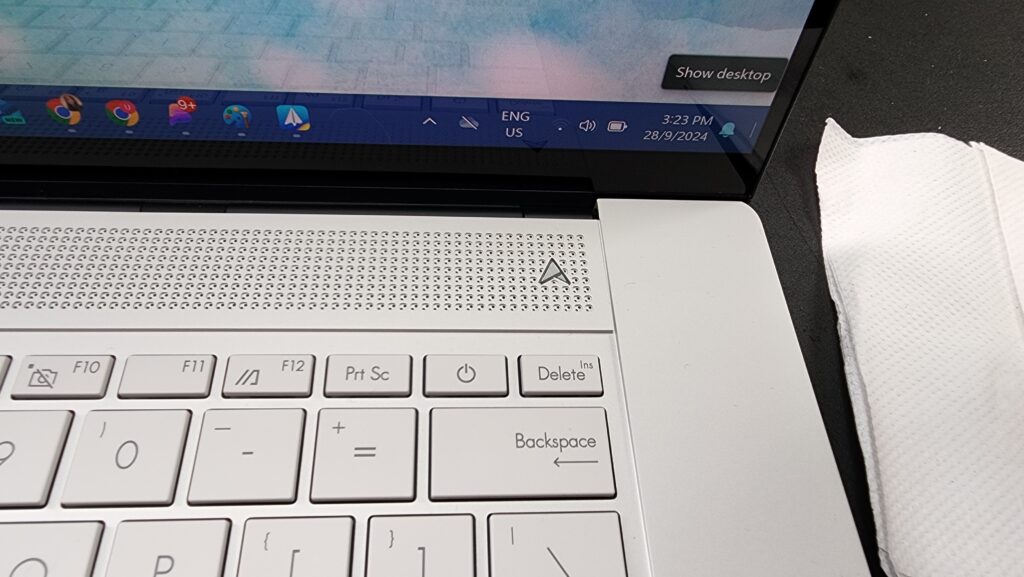
Anyway, the point is that my assumption was reinforced by the fact that the speakers are really good. The sound is clear and punchy even at higher volumes, and the soundstage is impressively wide. Similarly, the mics and AI noise cancellation make for pleasant online meetings – at least for people on the other end.
What I’m not used to seeing though, are ports. Most of your business will take place on the left, with 2 USB-C, a HDMI port, and a headphone jack. Meanwhile, the right houses a single USB-A port and a full-sized SD card slot. Just bear in mind that the Zenbook S16 charges via USB-C, so you’ll be one port short when charging.
I think a single USB-C port on the right would be great for flexibility in charging, but that’s a big ask coming from someone who rejoiced when Apple reintroduced Magsafe.
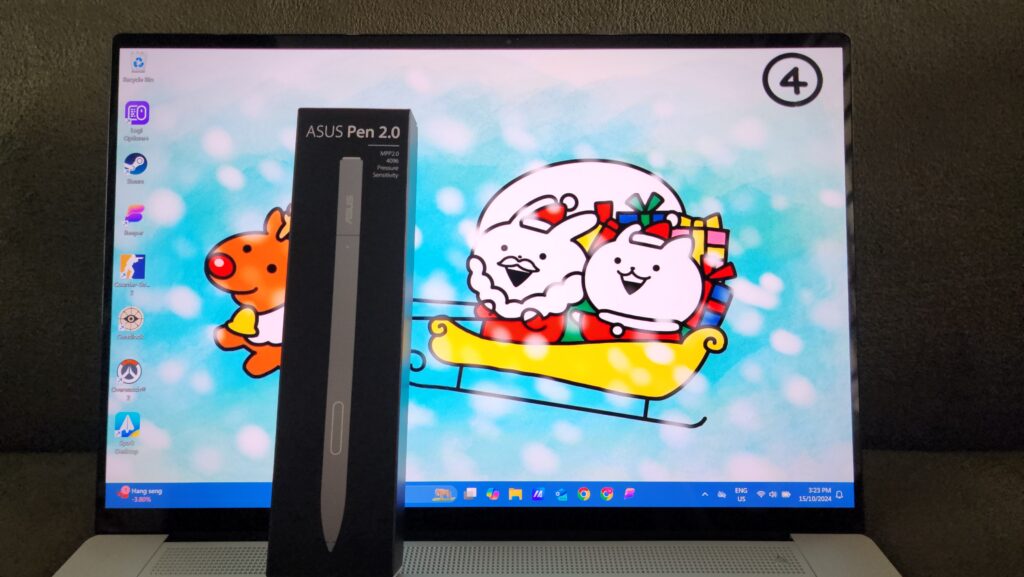
It’s also nice that ASUS includes a stylus pen for use with the touchscreen. However, I cannot for the life of me find any use for a touchscreen on a laptop other than flexing the fact that I have it. Perhaps it’s just me, but I couldn’t figure out the ergonomics of writing on a screen that doesn’t lay flat.
AI features are hit-and-miss… for now
If anything, the Zenbook S16’s AMD Ryzen AI 9 HX 370 processor is an indicator that this laptop is ready to take on AI advancements in the near future. And the keyword here is “near future”
However, I’ve found baked-in AI features – whether on Apple Intelligence or Galaxy AI – to be… not particularly useful. To a degree, I’m feeling the same about Windows as well. Don’t get me wrong, there are amazing AI tools that allow you to transcribe, generate, summarize, and organize; but they exist as separate software. For now.
That being said, I think it’s important for a laptop to be able to handle AI processing. With 32GB of RAM and a dedicated NPU capable of locally processing up to 50 TOPS, you should be future-proofed for a few years to come. As a comparison, Generative AI on Photoshop is more than twice as fast on the Zenbook S16 in comparison to my M2 Macbook Air.
But for the current time, I wouldn’t get this (or any laptop) for its AI features alone.
My experience with Copilot has been alright at best. I prefer it to the new Siri, but ChatGPT is faster and generates (personally) better responses. The Zenbook S16 is ready for Copilot+ but that comes as a free update once it’s available. This was not available during my time with the laptop.
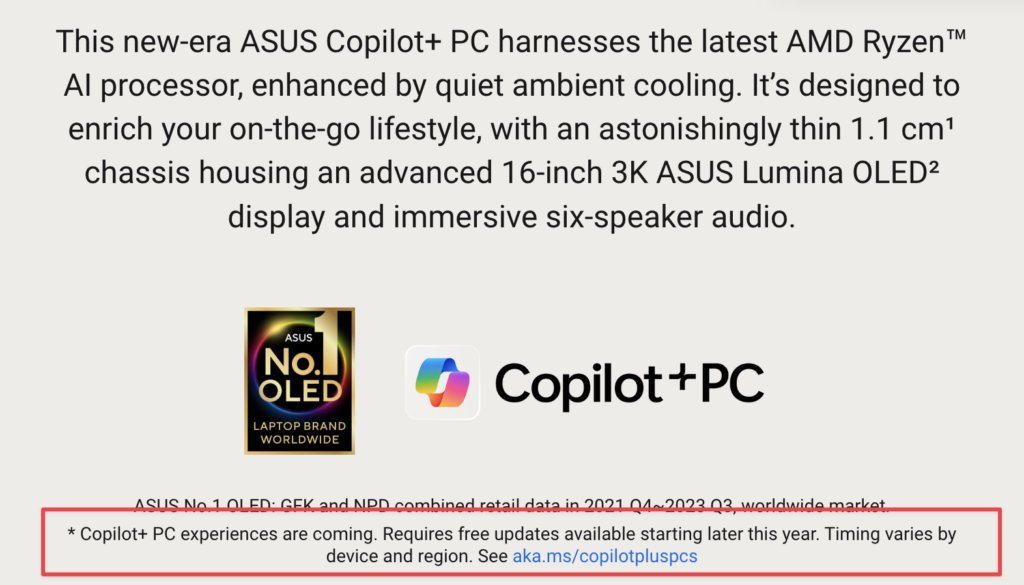
As mentioned, I didn’t find much daily use for many of the AI features that came with the laptop, with one potential exception. ASUS StoryCube is essentially an AI-assisted media manager and editor that tags and categorizes your media for efficient search and navigation. It works like an on-device version of Google Photos, on AI steroids.
I’ve only used it for images that I’ve accumulated over the month I’ve had the Zenbook, so I can’t speak much about how StoryCube would perform heavily loaded with gigabytes of content. As of my experience with it, it’s the one AI app I wish I could bring with me to the Mac.
The only thing stopping me from switching to Windows is…. Windows
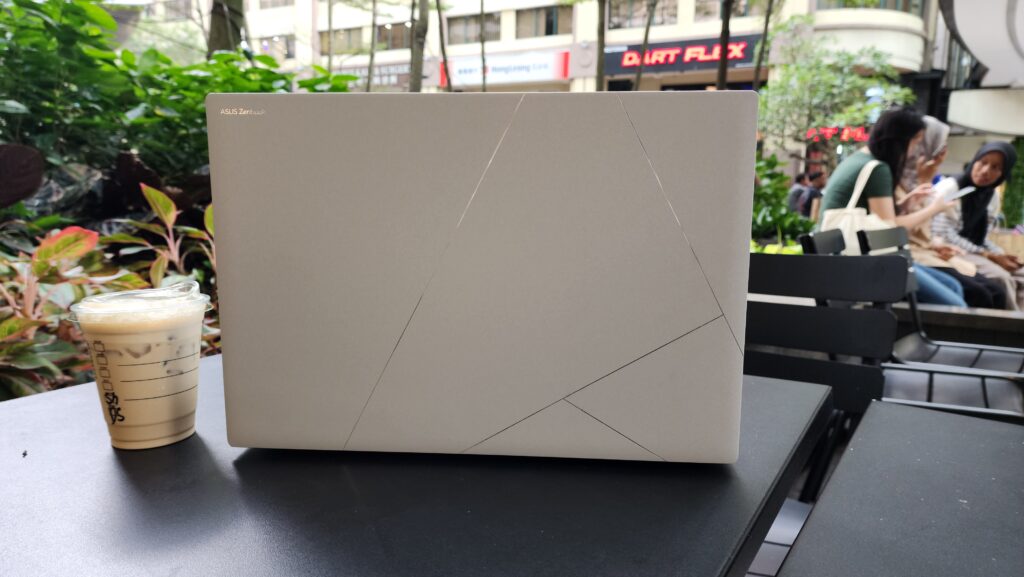
Yeah…. my friend was a tad too overconfident in his statement that the Zenbook would exceed everything I like about the Mac. But I’d say he was 40% right.
To be fair, that isn’t due to any shortcomings from ASUS. If the Zenbook S16 ran MacOS, I’d take it over Apple’s Macbooks for the design and material choices. Unfortunately, Windows doesn’t offer me enough of a reason to leave the walled garden that is MacOS.
However, if you’re already in the market for a premium Windows laptop, then I think the RM7,999 Zenbook S16 will serve you well for quite a few years to come.
- 36Shares
- Facebook34
- Twitter1
- WhatsApp1


